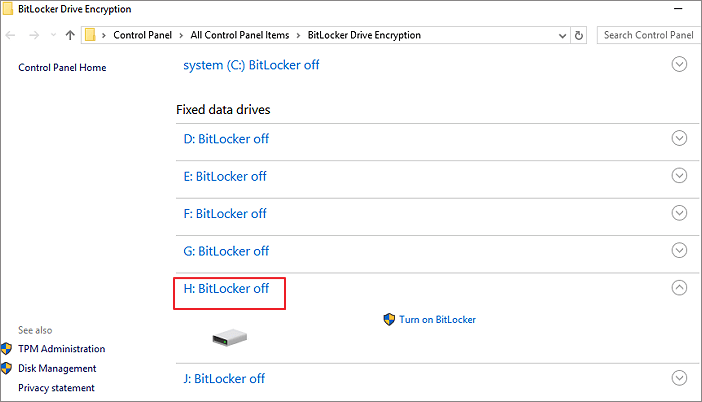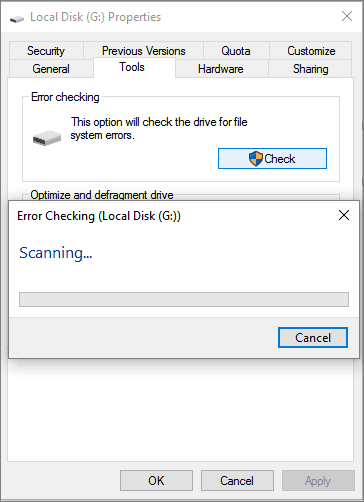Want to know how to remove write protection from hard drive on Windows 10/11? Read this guide to find the 6 effective methods to remove write protection from internal/external HDD and recover data from it effectively.
Free Hard Drive Data Recovery Tool.
Recover data from USB drives, Pen drives, SSDs, HDDs, and other devices on Windows. Try now!
So, let’s get started now……!
Write protection, also known as read-only is a security feature that prevents unauthorized users from modifying or deleting the data stored on a storage device, such as – hard drive, USB/pendrive, etc.
When the write protection is enabled on a device, you can’t make any changes or modifications to the data stored on it, This feature can be useful in safeguarding important files or preventing accidental or intentional deletion of data.
However, there may be situations where you need to remove the write protection from your hard drive to make some changes in it. So, today in this guide, we’ll show you how to remove write protection from external hard drive using 6 workable methods.
But before knowing the solutions, let’s find out common reasons that enables the write protection on your device.
Why Is My Hard Drive Write-Protected?
The data storage media like SD cards, USB drives, and other internal or external disks might get write-protected because of the following factors:
- If a physical switch of a USB drive/SD card is on a Lockside.
- Hard disk corruption
- The disk is set to Read-only mode
- Due to bad sectors
- Encrypted disk drive
- Alteration in permissions or registry by a user.
How to Remove Write Protection from Hard Drive Windows 11/10?
When it comes to remove write protection from internal & external hard drive in Windows 10/8/7, you can follow the methods mentioned below:
Method 1- Check Physical Switch of the Disk
The very first method that you should try to remove the write protection on SD card or USB drive is to inspect the physical switch of the device.
If the SD card/flash drive’s physical switch is in a locked position, it is likely the drive becomes write-protected. In that case, you have to locate the physical switch & turn it ON (if already OFF) on your SD card or USB.
Now, check if a write-protected issue disappears.
Method 2- Disable Write Protection With Regedit Option
Try to modify the Registry Information to remove the hard disk write protected with Regedit.exe. And, to do so, you need to operate the below steps:
- First of all, you can connect the disk is write protected external hard drive with Windows PC.
- Now, you need to click on the option “Start” and then open Run dialog and then you have to type there Regedit and after that, you need to hit the “Enter” key so that it can open the “Registry”.
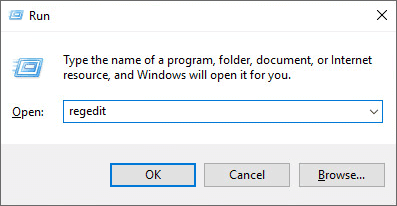
- Now, you are required to click on the option “HKEY_LOCAL_MACHINE” and then Expand “System”.
- After this, click on the option “Current Control Set” you find in the System list and then click on the option “Control”.
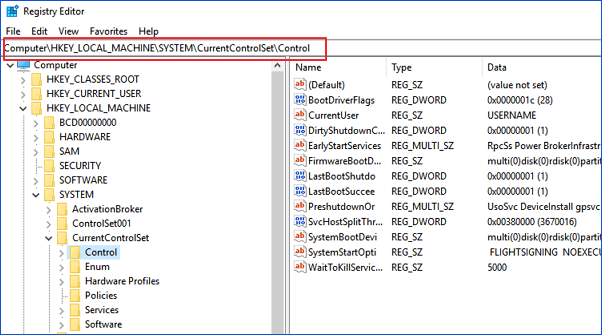
- Next, you have to check the option “Storage Device Policies” and then change the digit in the DWORD value box into 0 and then simply click on “OK” option so that you can save the changes.
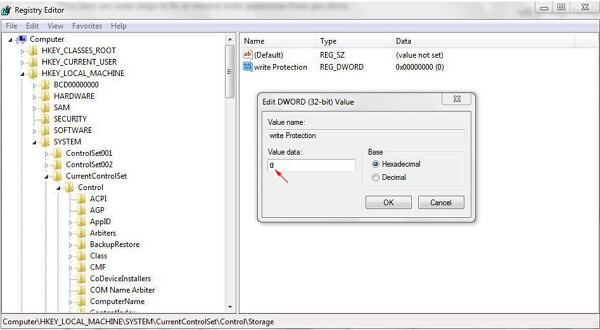
- In the last step, you have to exit Regedit and then reboot the Windows system to keep all the changes.
Note: Performing any wrong operation with the registry may remove and also delete the files from the internal/external hard drives, SD cards, USB flash drives, etc.
Method 3- How to Remove Write Protection From Hard Drive Using Command Prompt
If the regedit option fails to fix write protection on a USB drive or SD card, you can try is to run the command attributes disk clear readonly. Here are the steps to do so:
- First of all, you have to click the option “Start” and then enter the “diskpart” just to open the utility.

- Now you have to type “list disk” and then press “Enter” key.
- Next, type “select disk E” and then press the key “Enter”.
- Now, you have to type “attributes disk clear readonly” and then press Enter key.
- After this, just enter “exit” and then press Enter key to end the process.
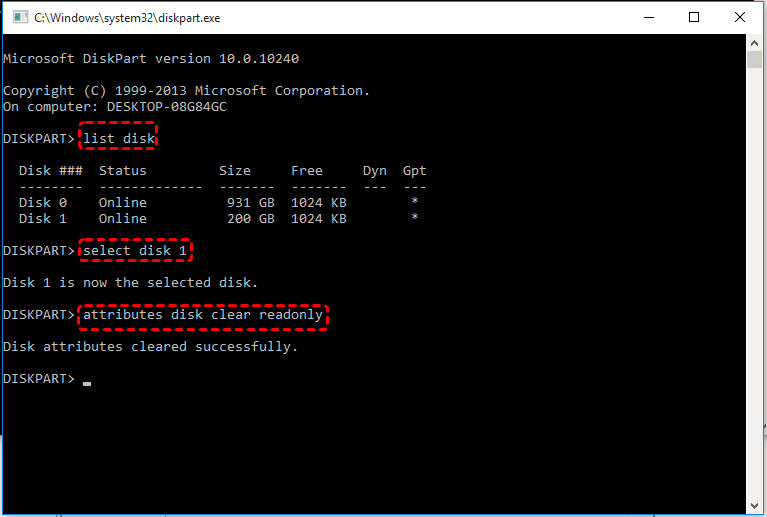
After performing these steps, you will be easily able to remove write protection from SD card and will be soon able to transfer the files or format the SD card with ease.
Method 4- Turn off BitLocker partition in Windows
Generally, when you enable BitLocker on the external or internal hard drive partition then it will protect the files with its encryption feature. And in that case, you will not be able to do changes to the BitLocker partition unless the removal of write protection is operated.
So, to do that action, you have to follow the below steps:
- First of all, you need to open “This PC” and then right-click on the BitLocker partition or storage devices and then you have to select “Manage BitLocker”.

- Now you have to select the correct partition which is write-protected by BitLocker and there you have to click the option “Turn off BitLocker”.

- Now you have to wait and the BitLocker will automatically decrypt on its own.

- After this, you will be able to see the partition or external hard drive that shows BitLocker off. You can then manage the data on the partition without BitLocker write protection and then you have to save the new files to it again.
Method 5- Check & Fix the Write-Protected Hard Disk Using Error Checking
Another yet option that you can try to solve write protection on an external hard drive is to run Error Checking to figure out the issue in the affected drive and fix it.
Here are the easy steps to run this command:
- Open the File Explorer >> find the write-protected disk >> right-click on it.
- Choose ‘Properties’ option & click on ‘Tools’ tab.
- Now, in the ‘Error Checking’, you have to click on ‘Check’ button.
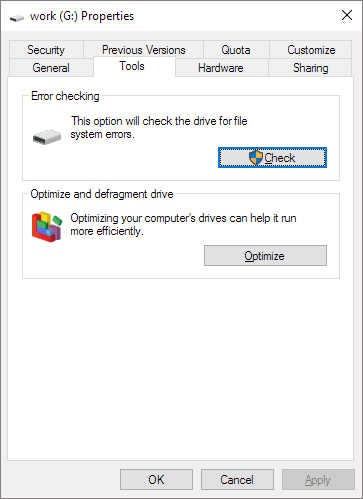
- After this, a popup will appear, click on ‘Scan’.
- Once the scanning process gets over, the issue will be figured out and fixed it successfully.
Method 6- How Do You Format A USB That Is Write Protected
Even after trying the above fixes, if you are unable to remove write protection from hard drive, USB drive, or SD card, then one and last option left for you, that is formatting the write protected drive.
Before trying this method, make sure to save the backup of your hard drive data. This is because, formatting will erase everything from your drive. However, the deleted files can be easily recovered using Hard Drive Data Recovery Tool.
Follow the below steps to format your write protected drive:
- Firstly, you need to connect your hard drive to a computer.
- Then, open the File Explorer by pressing Windows + E keys.
- Locate your connected drive, right-click on it, and choose the Format option.

- Next, you need to choose the file system by clicking on the dropdown menu. (make sure to select the Quick Format option checkbox)
- Finally, click on the Start button to begin the formatting process.
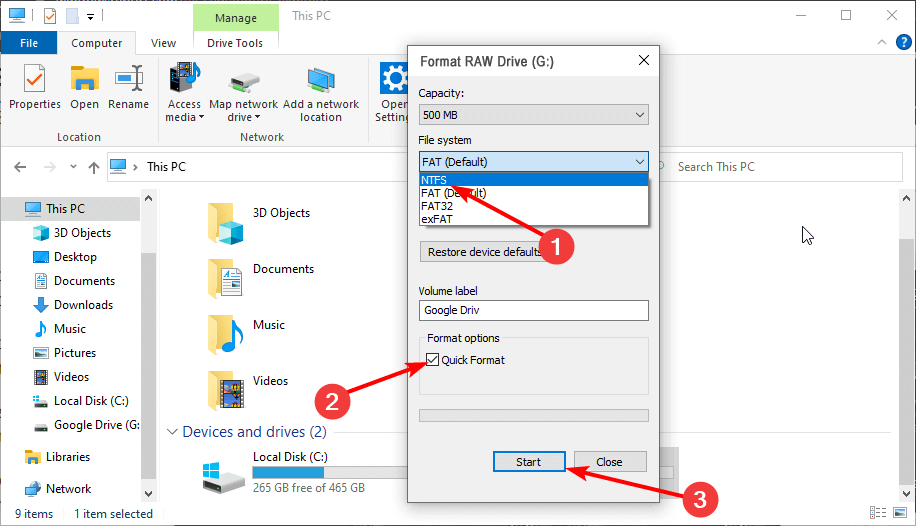
What To Do If You Lose Data From Hard Drive After Removing Write Protection From It?
Well, in this case, if you lose all your content; say, images or videos from your respected storage device then you can use the External Storage Data Recovery Tool. This tool will definitely help you restore lost data from internal and external hard drives.
It not only recovers data from hard drives but also retrieves files from USB drives, pen drives, memory cards, etc. No matter whether your storage drive is write-protected, locked, encrypted, or virus-infected, this powerful tool can recover the files from it effectively.
You can easily perform external storage data recovery using some manual ways or with the help of this tool. This tool is very easy to use and is available for Windows and Mac individually.


* Free version of the program only scans and previews recoverable objects.
Steps To Recover Lost Data From Storage Devices
Step 1: Select Desired Location
Firstly, select the drive, external media or volume from which you want to recover deleted media files. After selecting, click on 'Scan'.
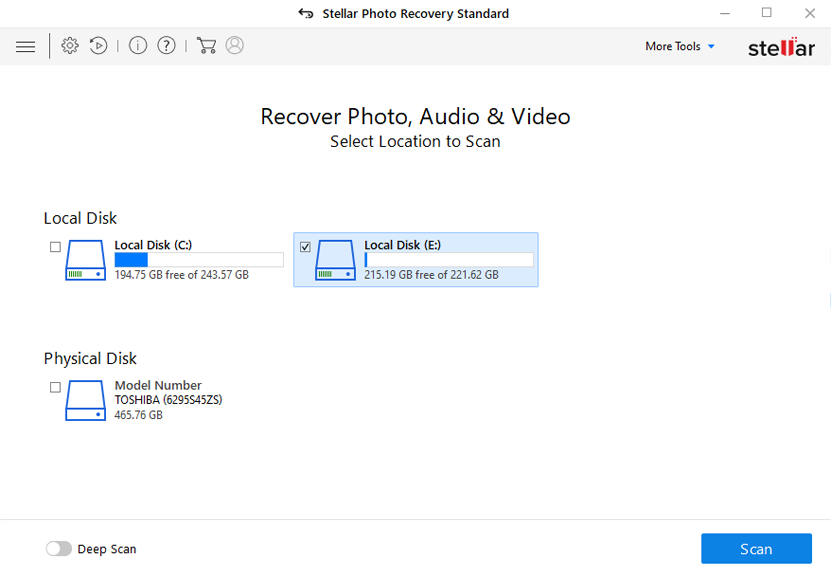
Step 2: Preview Recovered Media Files
Next, you can preview the recoverable media files after the scanning process is completed.
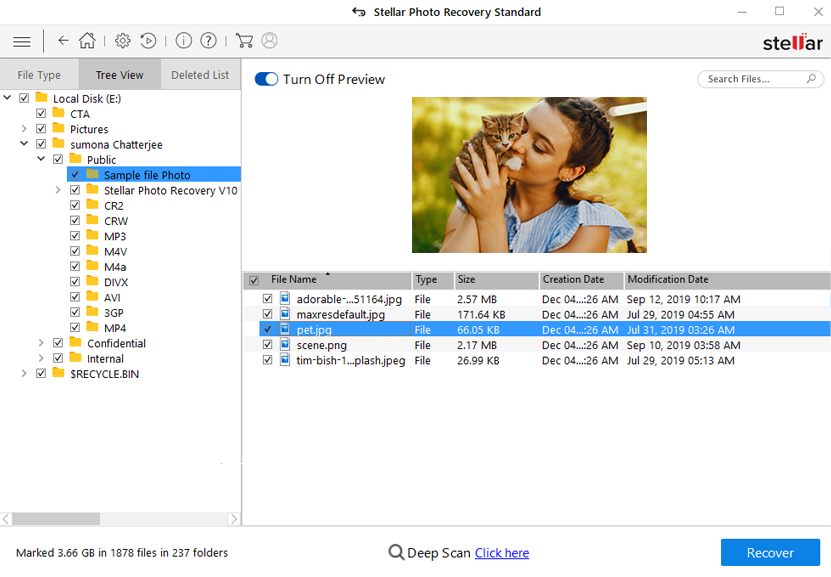
Step 3: Recover Media Files
Lastly, you can select the images, audio, video files you want to restore and click on 'Recover' option to save them at the location you want.
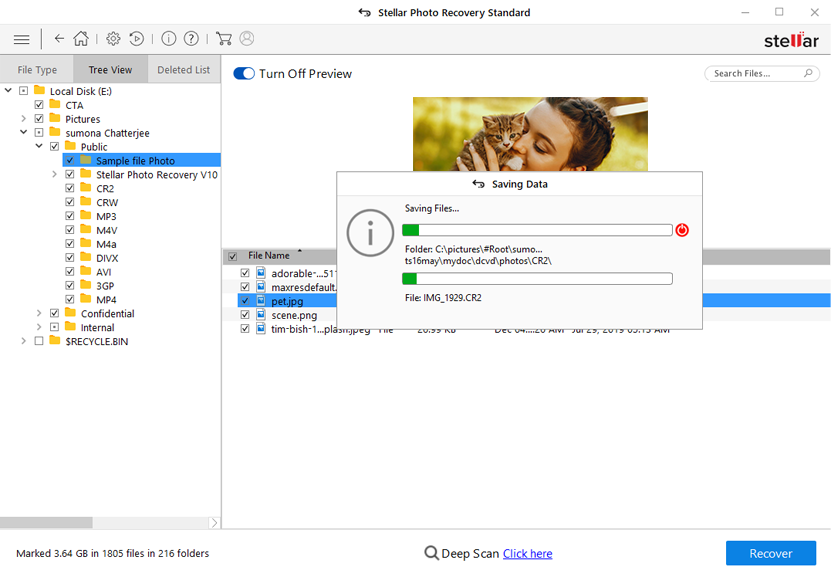
Related FAQs:
Yes, of course, it is possible to disable/remove write protection from the hard disk.
You can type in the command ‘attributes disk clear readonly’ & hit the Enter key to remove the write protection from the internal or external hard disk.
You can turn OFF write protection on your internal hard drive by trying the below tricks:
You can easily format the write-protected hard drive using Diskpart command or Disk Management. Using both the powerful options, you can format 2TB hard drive to FAT32, format RAW or corrupted hard drive easily. Is It Possible to Remove Write Protection?
What Command Removes Write Protection?
How Do I Turn Off Write Protection on My Internal Hard Drive?
How Do I Format a Write Protected Hard Drive?
Final Words
There can be various reasons that enable the write protection feature on your external/internal hard drives, USB drives, or SD cards. But fortunately, there are some effective methods mentioned in this post that can help you remove write protection from hard drive.
This article provides the 6 feasible ways to disable write protection on hard drives. So, if your device is write-protected, keep implementing the given methods one by one to resolve this issue effectively.
Last but not least, if you found this post helpful, do share it with others…….!

Taposhi is an expert technical writer with 5+ years of experience. Her in-depth knowledge about data recovery and fascination to explore new DIY tools & technologies have helped many. She has a great interest in photography and loves to share photography tips and tricks with others.
